A way down to Cu Chi tunnels. (Photo: Hong Giang/VNA)
Located about 70km northwest of Ho Chi Minh City, Cu Chi tunnels are a miniature of the creative and varied battle formations of the army and people of Cu Chi during the long and fierce 30-year resistance war against invaders to gain independence and freedom for the Fatherland.
The entire Cu Chi tunnel has a total length of 250km, divided into 3 different depths. The highest level is 3m above ground, the middle level is 6m, the deepest level is 12m. In addition to the area for soldiers to live and store weapons, the Cu Chi tunnels are also divided into many branches with areas of nail holes, spike pits, minefields, etc.
Relying on the system of underground tunnels, fortifications, and trenches, soldiers and people of Cu Chi fought extremely bravely, achieving miraculous feats.
With its great feat, Cu Chi tunnels have entered the history of the heroic struggle of the Vietnamese people as a legend of the 20th century and become a famous place in the world.
Cu Chi tunnel tourism is increasingly developing today because it is not only a destination with historical and cultural value but also an attractive tourist destination associated with famous military works in Vietnam.
1. Origin of the tunnels
For a long time, Cu Chi Tunnels has been one of the most interesting destinations in Ho Chi Minh City. However, not everyone knows the history of this tourist destination.
During the years of resistance against French colonialism (1945-1954), revolutionary soldiers hid in secret bunkers in enemy-held areas, sheltered and protected by the people.
Secret bunkers are constructed in many ways, but are mainly underground, with only one opening just wide enough for a person's shoulder and a vent for breathing. When the bunker's lid is closed, it is difficult for enemies on the surface to detect the bunker. Cadres living in enemy territory hide in secret bunkers during the day and come out at night to operate.
The entrance to the second floor of Cu Chi tunnels. (Photo: Cu Chi Tunnels Historical Site)
But the secret tunnel has the disadvantage that when discovered, it is easy for the enemy to control, capture or destroy, because the enemy is more numerous and has a much greater advantage. From there, people thought that it was necessary to extend the secret tunnel into tunnels and open up the ground with many secret doors to both take shelter and fight the enemy, and when necessary, escape from danger to another place.
Since then, the tunnels were born with a special significance in the fighting and working activities of cadres, soldiers and people in the suburbs of Saigon-Cho Lon-Gia Dinh.
In Cu Chi, the earliest tunnels appeared in 1948 in the two communes of Tan Phu Trung and Phuoc Vinh An. At first, there were only short sections of simple structure used to hide documents, weapons, and shelter cadres operating behind enemy lines. Later, they spread to many communes.
From 1961 to 1965, the guerrilla war of the people in Cu Chi developed strongly, causing great losses to the enemy, contributing to the defeat of the US "special war" strategy. Six communes in the north of Cu Chi district completed the "backbone" tunnel. After that, agencies and units developed branch tunnels connecting with the "backbone" tunnel, forming a complete tunnel system.
Entering the period of fighting against American imperialism, Cu Chi tunnels developed strongly, especially in early 1966, when the US used the 1st Infantry Division "Red Big Brother" to carry out a large operation called Crimp, sweeping and attacking the base area, and then sent the 25th Division "Tropical Lightning" to establish Dong Du base, continuously launching sweeping operations, fiercely attacking the revolutionary forces here.
Faced with the fierce attack of the US-puppet with a savage war of destruction, the Saigon-Cho Lon-Gia Dinh Regional Party Committee and the Cu Chi District Party Committee led the people and armed forces to determinedly fight and destroy the enemy to protect the homeland, protect the strategically important revolutionary base area, which was a dangerous approach and attack direction for the puppet capital Saigon.
With the slogan "not an inch gone, not a millimeter left," the army, militia, guerrillas, civil and party agencies, together with the people, competed to dig tunnels, trenches, and fortifications day and night, regardless of bullets, bombs, rain or shine, actively building "combat hamlets" and establishing an "American-killing belt" into a solid position to encircle, attack, wear down, and destroy the enemy.
The tunnel digging movement grew stronger and stronger everywhere, young and old, men and women enthusiastically participated in building tunnels to fight the enemy. The willpower of the people overcame difficulties.
Using only very rudimentary tools such as hoes and bamboo shovels, the army and people of Cu Chi created a massive project with hundreds of kilometers of underground tunnels, connecting the communes and hamlets together like a magical "underground village".
Just transporting tens of thousands of cubic meters of soil to another place to hide the secret of the tunnels was an extremely arduous and elaborate task. Such a large amount of soil was dumped by the people into countless flooded bomb craters, built into termite mounds, poured into the fields to plow, grow crops on top... and after a while, the traces were lost. Families in the "belt" area, every house dug tunnels and trenches connecting to the tunnels, creating a continuous position to both stick to production and fight to protect the village. Each person was a soldier, each tunnel was a fortress to fight the enemy.
One year after the Crimp raid, on January 8, 1967, the US army launched Operation Cedar Falls into the "Iron Triangle" area, aiming to destroy the base and destroy the revolutionary forces.
At this time, the tunnel system had reached a total length of about 250km. The Cu Chi tunnels were not passive but active combat combined with dense landmines on the ground, becoming a daily danger to the enemy throughout the war.
Cu Chi tunnels had a military medical station, a weapons manufacturing facility and a meeting place...
2. Tunnel structure
The Cu Chi tunnel historical relic site includes Ben Duoc tunnel (Saigon-Gia Dinh Military Region Base (Area A), Saigon-Gia Dinh Regional Party Committee Base (Area B) and Ben Dinh tunnel (Cu Chi District Party Committee Base).
The tunnel system runs in a zigzag pattern underground, from the “backbone” (main road) spreading out countless long and short branches, connecting with each other, or ending independently depending on the terrain. Many branches extend to the Saigon River, so that in case of a critical situation, one can cross the river to the Ben Cat base area (Binh Duong).
The tunnel is divided into 3 floors. Floor 1 (depth about 3m): Can withstand artillery shells as well as the weight of tanks and armored vehicles. This is mainly where ventilation pipes, traps, kitchens, etc. Floor 2 (depth about 5m), can withstand small bombs. This floor is mostly passages with a series of traps, spikes, some resting, sheltering and ambushing areas. Floor 3 (depth about 8 to 10m, some sections up to 12m), can withstand most types of bombs. The last floor of the tunnel includes resting places for cadres, medical stations, weapons reserves, cultural activities and combat planning meetings.
In the tunnel, there are necessary points to block the enemy or the chemical poisons sprayed by the enemy. There are narrow sections that must be very compact to get through. Along the tunnel, there are ventilation holes above that are discreetly camouflaged and open to the ground by many secret doors. Countless doors are structured into fighting nests, sniper gun emplacements that are very flexible. This is the place to surprise the enemy. Under the tunnel sections in dangerous areas, there are spike pits, nail holes, traps, etc.
Around the entrance to the tunnel, there are many spike pits, nail holes, and mines (called death zones), including large anti-tank mines and cluster bomb launchers to prevent enemy troops from approaching.
Connected with the tunnels are large tunnels for resting after fighting, where hammocks can be hung. There are places to store weapons, food, drinking water, wells, Hoang Cam stoves (stoves that hide smoke in the ground), working tunnels for leaders and commanders, surgical tunnels, and nursing wounded soldiers, sturdy A-shaped tunnels for women, the elderly, and children to take refuge. There are large tunnels with airy roofs, cleverly camouflaged above for meetings, film screenings, and art performances...
During the fierce bombing period, all activities of the fighting forces and the people's lives were underground. In the harsh conditions, they still tried to create a normal life, despite the constant bombardment and smoke above ground... but in reality, living in the tunnels was extremely difficult, it was a last resort.
Because of the need to preserve strength for long-term fighting, one must accept all the harshness that is beyond human endurance. Because in the dark, narrow underground, moving around is very difficult, most people bend or crawl.
The tunnels are damp and stuffy in places due to lack of oxygen and light (light is mainly candles or flashlights). Whenever someone faints, they have to be taken to the tunnel door for artificial respiration to regain consciousness. During the rainy season, many poisonous insects appear underground, and in many places there are snakes and centipedes...
Cu Chi Tunnels – a place with an underground system of more than 200 km long, the tunnels under the tunnels are just enough for one person to walk crouching. (Source: Vietnam National Administration of Tourism)
3. The War from Underground
From the very first days, when the American troops entered Cu Chi, they encountered fierce resistance from soldiers and people here. The enemy suffered losses in terms of human lives and war equipment during sweeps of the liberated areas.
After the surprise, they realized that the fighting forces were coming from underground tunnels and fortifications, so they were determined to destroy this powerful tunnel system.
For a long time, the enemy continuously attacked and destroyed the base area and the tunnel system very fiercely. Mainly using the following five tricks:
Use water to destroy tunnels
In an operation called Crimp (The Trap), from January 8 to January 19, 1966, the US mobilized up to 12,000 infantry combined with air force, tanks, and intelligence to attack the liberated area north of Cu Chi. The enemy used water pumps into the tunnels, thinking that the enemy would drown and have to rise to the surface. When they discovered tunnel entrances in places far from the Saigon River, they used helicopters to lift water tanks to pour into the tunnels.
With this trick, the enemy failed to achieve their goal because they were not capable of flooding the tunnels with too little water, just enough to seep into the ground.
According to enemy documents, they only destroyed 70m of tunnels, a very small number compared to the tunnel system of hundreds of kilometers.
On the contrary, during the entire sweep, the US troops were attacked from all sides by soldiers and guerrillas day and night, causing 1,600 casualties, 77 tanks and armored vehicles destroyed, and 84 aircraft shot down. This was a great loss for the US troops in the “Trap” operation. It proved that people’s guerrilla warfare was capable of defeating modern American warfare.
Despite the failure, the enemy continued to attempt to destroy the tunnels. They sent a number of military experts to directly investigate and research the Cu Chi tunnel system, but they did not have the conditions to conduct a thorough investigation, coupled with their subjective mindset and reliance on modern weapons, so they did not produce results; their subsequent schemes failed one after another and they suffered even more severe defeats.
Female guerrillas of Cu Chi.
Using an army of "rats" to attack tunnels
In the Cedar Falls operation, dubbed "Peeling the Earth," which began on January 8, 1967, the enemy mobilized 30,000 troops with maximum support from tanks, armored vehicles, artillery, and air force, to fiercely attack the "Iron Triangle" area, in which they leveled the town of Ben Suc (Ben Cat) and severely destroyed 6 communes in the north of Cu Chi district located in a dense tunnel system.
In carrying out this major operation, the enemy had the ambition to destroy the Saigon-Cho Lon-Gia Dinh Military Region Command, the leadership body of the Regional Party Committee, destroy the main units of the Military Region, destroy the base area and tunnel system, move people to other places, and turn this area into a "Free Zone of Destruction."
In fact, the US-puppet forces caused 1,000 casualties, gathered 15,000 other people into strategic hamlets, burned and demolished 6,000 houses, and stole 5,700 tons of rice...
During the raid, the enemy used a "rat" army of 600 engineers, selected from "small men" specifically in charge of destroying the tunnels.
Before launching the sweep, the enemy used B.52 “flying fortresses” and jet bombers to bomb and bomb, combined with artillery, continuously for a month, in order to “clear the ground” for helicopters to land troops and tanks, and infantry to attack the base area. They also used napalm bombs to burn hundreds of hectares of forest and gardens. Bulldozers cleared the forests, piled up trees, poured concentrated gasoline and set them on fire.
The "rats" each had 4 members, 2 stayed above, 2 went down into the tunnel (where they discovered them because the enemy had moved to another location) equipped with gas masks, super fast submachine guns, daggers, iron rods, poison blowers, flashlights... At tunnel junctions, they placed mines there, brought electric wires above ground, then "ignited" the mines to explode and destroy the tunnel.
By this method, the enemy destroyed some short sections of the tunnel, but it was nothing compared to hundreds of kilometers of tunnels with many levels and many interconnected nooks and crannies. The tactic of using engineers to destroy the tunnels failed.
During this raid, the fighting forces and the people held their ground steadfastly, fought back fiercely, and protected the Command Headquarters, the leaders of the regional committee, and most of the base area. Wherever the enemy went, they were attacked by soldiers from the fighting positions and trenches using all forms and weapons.
At the Ben Duoc intersection (the current relic site), only one guerrilla team with 9 soldiers, including a female nurse, clung to the tunnel continuously for many days, killed 107 enemies, and burned their tanks.
Operation Cedar Falls suffered more than twice as much damage as Operation Crimp and had to end sooner than expected (lasting only 19 days). The “slide mines” invented by hero To Van Duc were used throughout the battlefields, contributing to the destruction of hundreds of vehicles and many helicopters, American infantry, and repelling the enemy’s evil steps.
In total, the enemy lost 3,500 soldiers, 130 tanks, armored vehicles, and 28 aircraft during the entire Cedar Falls sweep. In the end, the US had to admit: “… it was impossible to destroy the tunnel because it was not only too deep but also extremely winding, with few straight spots… Attacking with sappers was ineffective… and it was very difficult to find the tunnel entrance to the tunnel…”.
Tourists watch a model of the defeat of the Cedar Falls raid. (Source: Cu Chi Tunnels Historical Site)
Using Berger dogs to destroy tunnels
During the raids, American soldiers used Berger dogs to guide them in hunting and discovering tunnels. About 3,000 of them were mobilized to the battlefields of Cu Chi and Ben Cat. This breed of dog came from West Germany, was very good at sniffing out people, and was trained in “professional” skills before coming to Vietnam.
The use of military dogs caused difficulties and dangers for soldiers and guerrillas, because human breath rose up into the vents and tunnels, making it easy for dogs to find them. At first, guerrillas shot the dogs dead, causing the enemy to discover them and concentrate their attacks.
Later, the soldiers crushed dried chili peppers and mixed them with pepper powder and sprinkled them into the vents, but it didn't work because the dogs inhaled the pepper and coughed, allowing the enemy to discover the tunnels.
According to published documents, in the campaign using dogs to attack the Cu Chi tunnels, 300 dogs died of disease and were shot dead by guerrillas. Thus, the trick of using Berger dogs to detect and attack the tunnels of the American army failed.
Using bulldozers to destroy tunnels
This was an extremely cruel tactic, they mobilized hundreds of tanks and high-horsepower vehicles to dig up sections of the tunnel. Wherever the bulldozers went, the US troops blew toxic chemicals into the tunnel, while using loudspeakers to call on the enemy to surrender. In one rare case, they dug up the entire secret tunnel and threw it on the ground without knowing that there were people hiding inside. At night, the soldiers in the secret tunnel escaped...
During these days, despite the American army's coordination with other branches of the army to launch fierce attacks, the revolutionary forces remained in the tunnels, fighting and consuming much of their firepower.
Not achieving the desired results, the enemy had to abandon this tactic, because it was impossible to destroy all the tunnels under the conditions of being fought back by troops and guerrillas day and night.
Meeting room of the Saigon-Cho Lon-Gia Dinh Military Region Command. (Photo: Cu Chi Tunnels Historical Relic Site)
Sowing grass to destroy the terrain
The enemy also used many tricks to destroy tunnels and bases, but the most notable was the trick of sowing weeds to destroy the terrain.
They used planes to spray a strange type of grass, which Cu Chi people used to call "American grass." This type of grass, when sown, grew incredibly fast in the rain, and after only one month it was 2-3m tall, with stems as big as chopsticks and sharp. Other grasses were overwhelmed by it and could not grow. American grass grew into forests, making it difficult to move around and fight, but it was very easy for the enemy to detect targets from the plane, to shoot at them.
In the dry season, the American grass turned yellow and dried up like straw. Airplanes launched rockets or dropped bombs and artillery shells, causing the dry grass forests to burst into flames, leaving the ground bare, the guerrillas’ minefields exploded, and the spike pits burned down… Units and agencies had no more terrain to hide in, and as they walked, they left footprints in the ash. The enemy followed their tracks to the tunnel entrances to attack.
However, the trick of sowing weeds to destroy the terrain suffered the same fate as the tricks mentioned above. Because the immortal green of Vietnamese fields and gardens still rose to cover the base areas. The revolutionary forces still clung to the soil of Cu Chi.
And from the tunnel system, they rushed forward to join forces with the people to simultaneously attack the enemy's lair in Saigon in the Spring of 1968, capturing most of the important targets of the US-puppet regime such as the Independence Palace, the US Embassy, the Radio Station, the General Staff, the puppet Navy Command, Tan Son Nhat airport...
After the Tet Offensive and Uprising, the battlefield changed a lot. The enemy implemented the "sweep and hold" tactic, continuously launching fierce counterattacks to sweep and destroy the liberated area of Cu Chi, in order to push the revolutionary forces away and create a safe belt to protect Saigon. The tunnels were consolidated and developed, creating a solid position for the forces approaching the suburbs, holding the area, and establishing a new battle formation to prepare for the opportunity to liberate Saigon later.
Until the spring of 1975, many large troops of the 3rd Corps and many main and local units gathered from here to liberate Cu Chi town and the last enemy stronghold in Saigon, ending the complete victory of the resistance war against the US, at 11:00 a.m. on April 30, 1975.
Anatomy tunnel. (Photo: Cu Chi Tunnels Historical Site)
3. The losses of war
Through an extremely rich and creative people's war, after twenty-one years of steadfast fighting, the army and people of Cu Chi fought 4,269 large and small battles, captured 8,581 guns of all kinds, eliminated from combat more than 22,582 enemies (including more than 10,000 Americans, 710 were captured), destroyed more than 5,168 military vehicles (mostly tanks and armored vehicles); shot down and damaged 256 aircraft (mainly helicopters), sank and burned 22 combat boats, destroyed and forced the withdrawal of 270 outposts.
To achieve glorious victories, Cu Chi also suffered great sacrifices. According to statistics, the whole district had to endure 50,454 sweeps; 10,101 civilians were killed; more than 10,000 cadres and soldiers sacrificed for the cause of liberating the homeland; 28,421 houses were burned; 20,000 hectares of fields and forests were destroyed...
Cu Chi was awarded the title Cu Chi - Land of Steel and Bronze Citadel by the National Liberation Front of South Vietnam. The Government twice awarded the title Hero of the People's Armed Forces.
Up to now, the whole Cu Chi district has been honored with 19 heroic communes, 39 heroes of the People's Armed Forces, 1,277 heroic Vietnamese mothers, and 1,800 people who have been awarded the title of brave soldier. Two orders of the Fatherland's citadel and over 500 orders of military exploits and exploits of various ranks have been awarded to collectives and individuals.
With the value and stature of the feat, which was forged with the blood and efforts of tens of thousands of soldiers and people, the Ben Duoc tunnel area (in Phu Hiep hamlet, Phu My Hung commune - Cu Chi district) was ranked as a national historical relic by the Ministry of Culture (now the Ministry of Culture, Sports and Tourism) in 1979.
The Ben Dinh tunnel system (in Nhuan Duc commune - the base of Cu Chi District Party Committee during the resistance war) was also ranked as a National Historical Site by the Ministry of Culture and Information in 2004.
In 2015, the Cu Chi tunnel historical site was recognized by the Prime Minister as a special national relic./.
According to Vietnam+
Source: https://baoangiang.com.vn/dia-dao-cu-chi-mot-huyen-thoai-cua-viet-nam-trong-the-ky-20-a418357.html


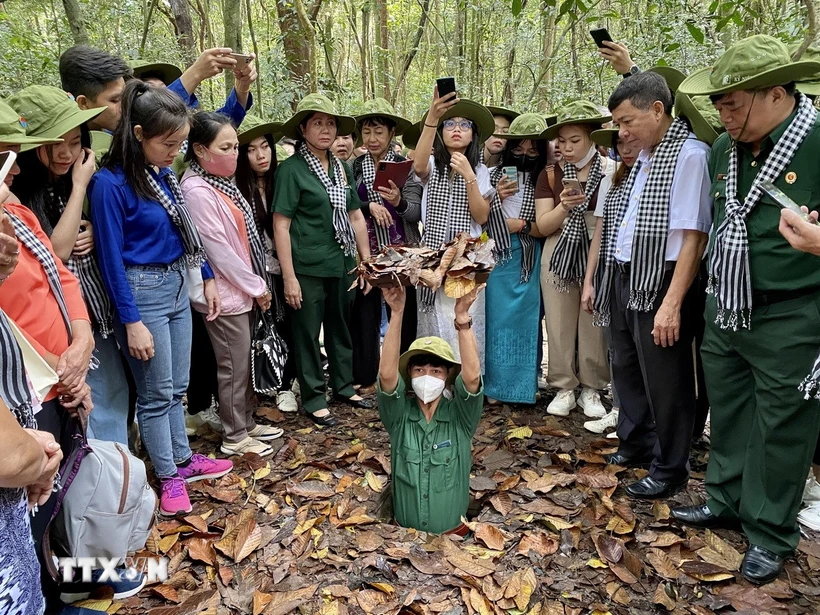
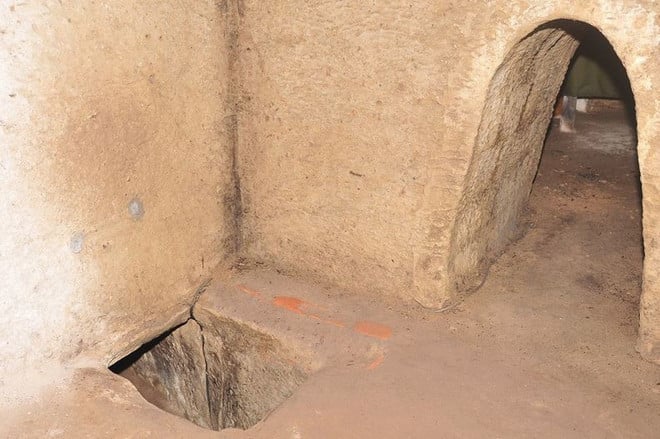
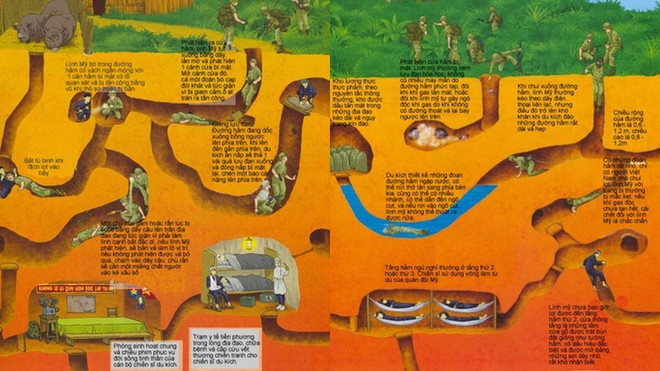
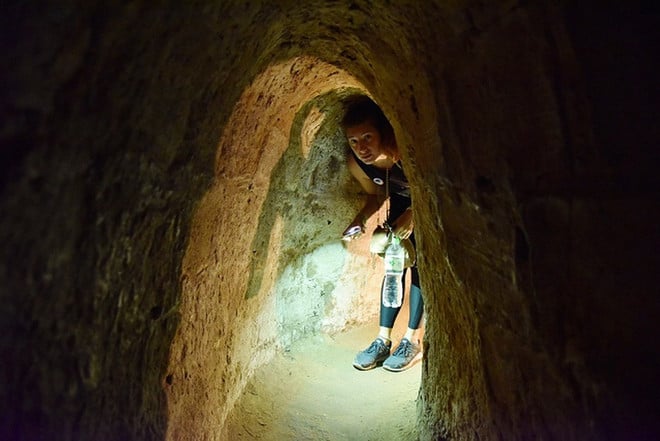
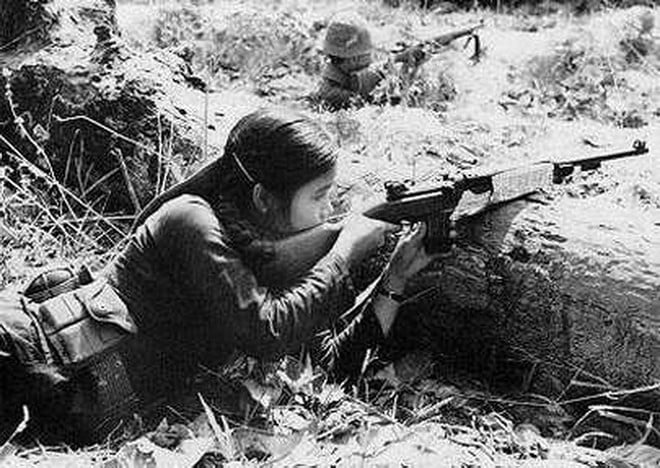
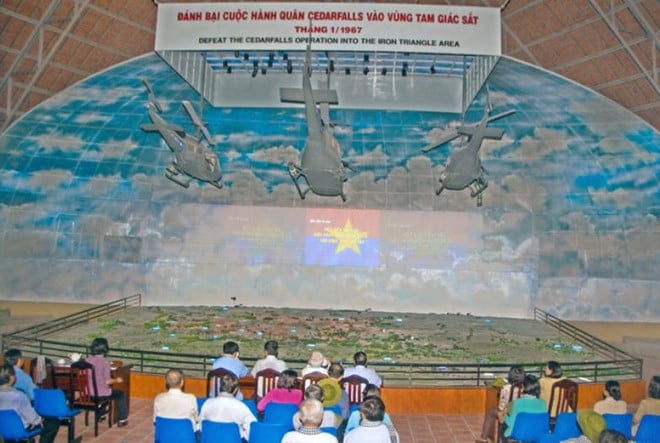
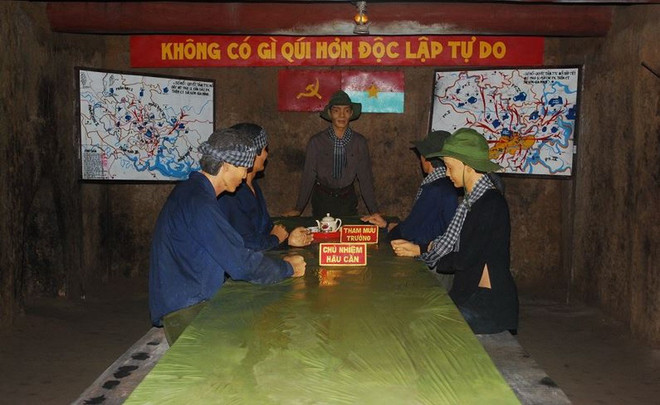
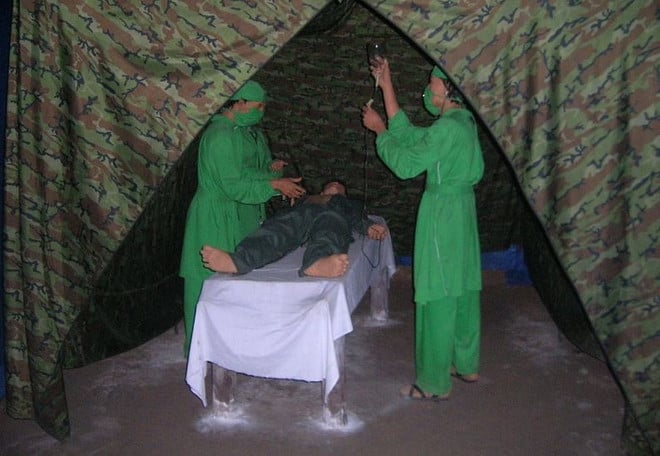
![[Photo] General Secretary To Lam concludes visit to Russia, departs for Belarus](https://vphoto.vietnam.vn/thumb/1200x675/vietnam/resource/IMAGE/2025/5/11/0acf1081a95e4b1d9886c67fdafd95ed)
![[Photo] General Secretary To Lam meets and expresses gratitude to Vietnam's Belarusian friends](https://vphoto.vietnam.vn/thumb/1200x675/vietnam/resource/IMAGE/2025/5/11/c515ee2054c54a87aa8a7cb520f2fa6e)



![[Photo] General Secretary To Lam arrives in Minsk, begins state visit to Belarus](https://vphoto.vietnam.vn/thumb/1200x675/vietnam/resource/IMAGE/2025/5/11/76602f587468437f8b5b7104495f444d)
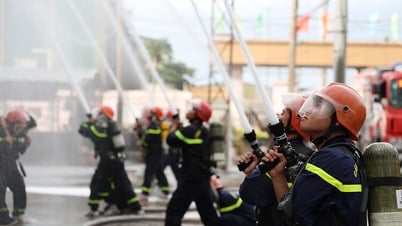


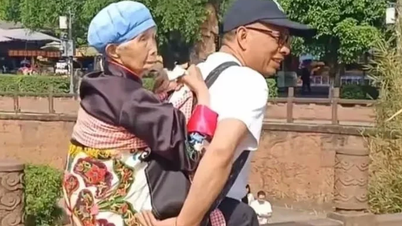






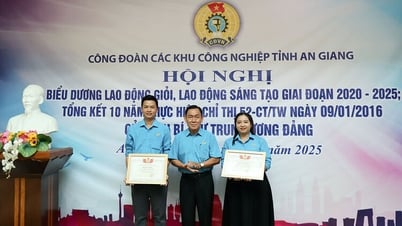
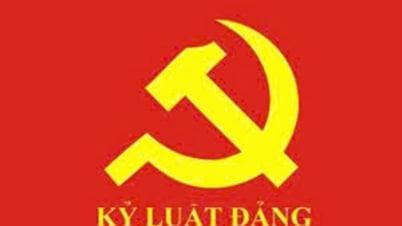


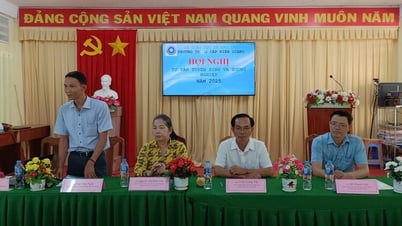


![[Photo] National Assembly Chairman Tran Thanh Man attends the Party Congress of the Committee for Culture and Social Affairs](https://vphoto.vietnam.vn/thumb/1200x675/vietnam/resource/IMAGE/2025/5/11/f5ed02beb9404bca998a08b34ef255a6)





























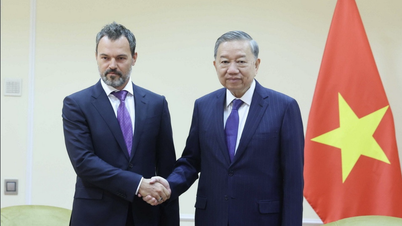

















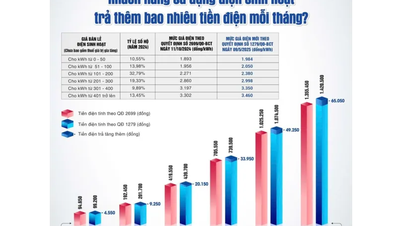

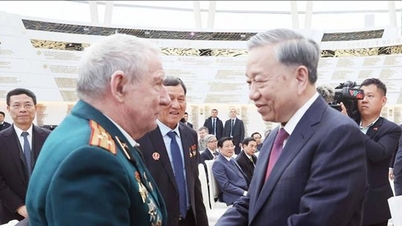


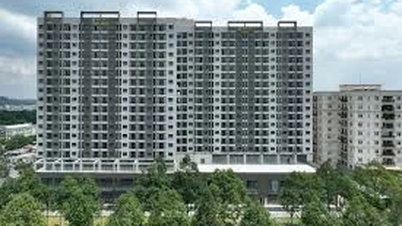











Comment (0)